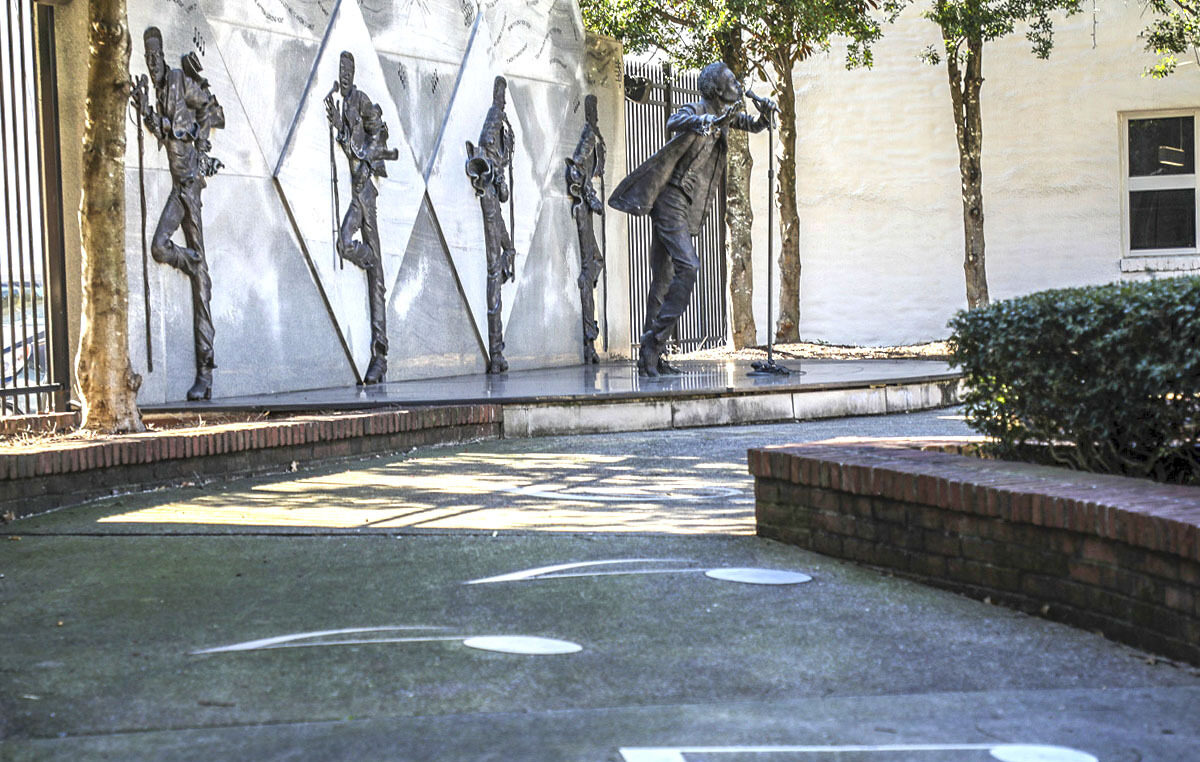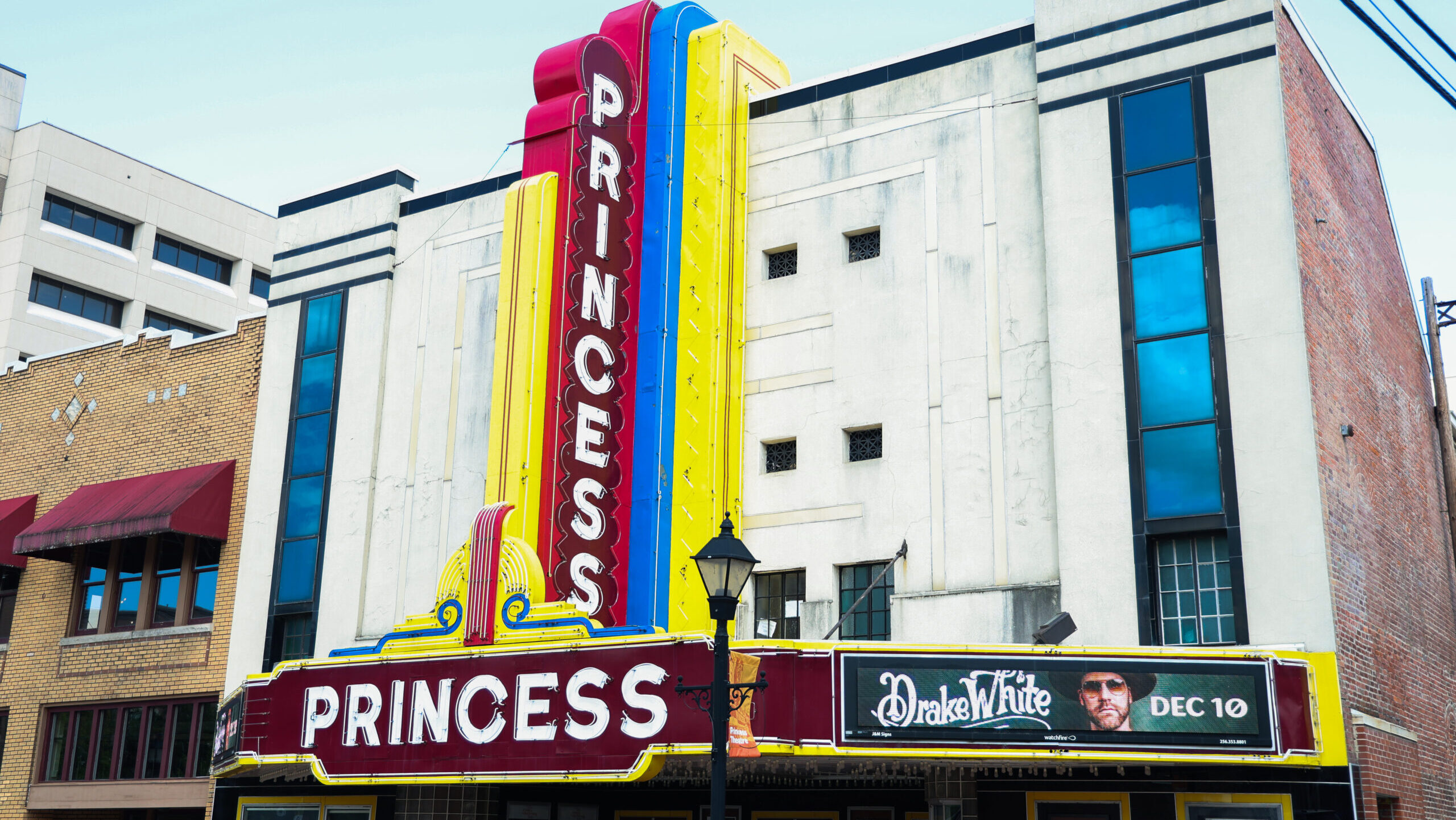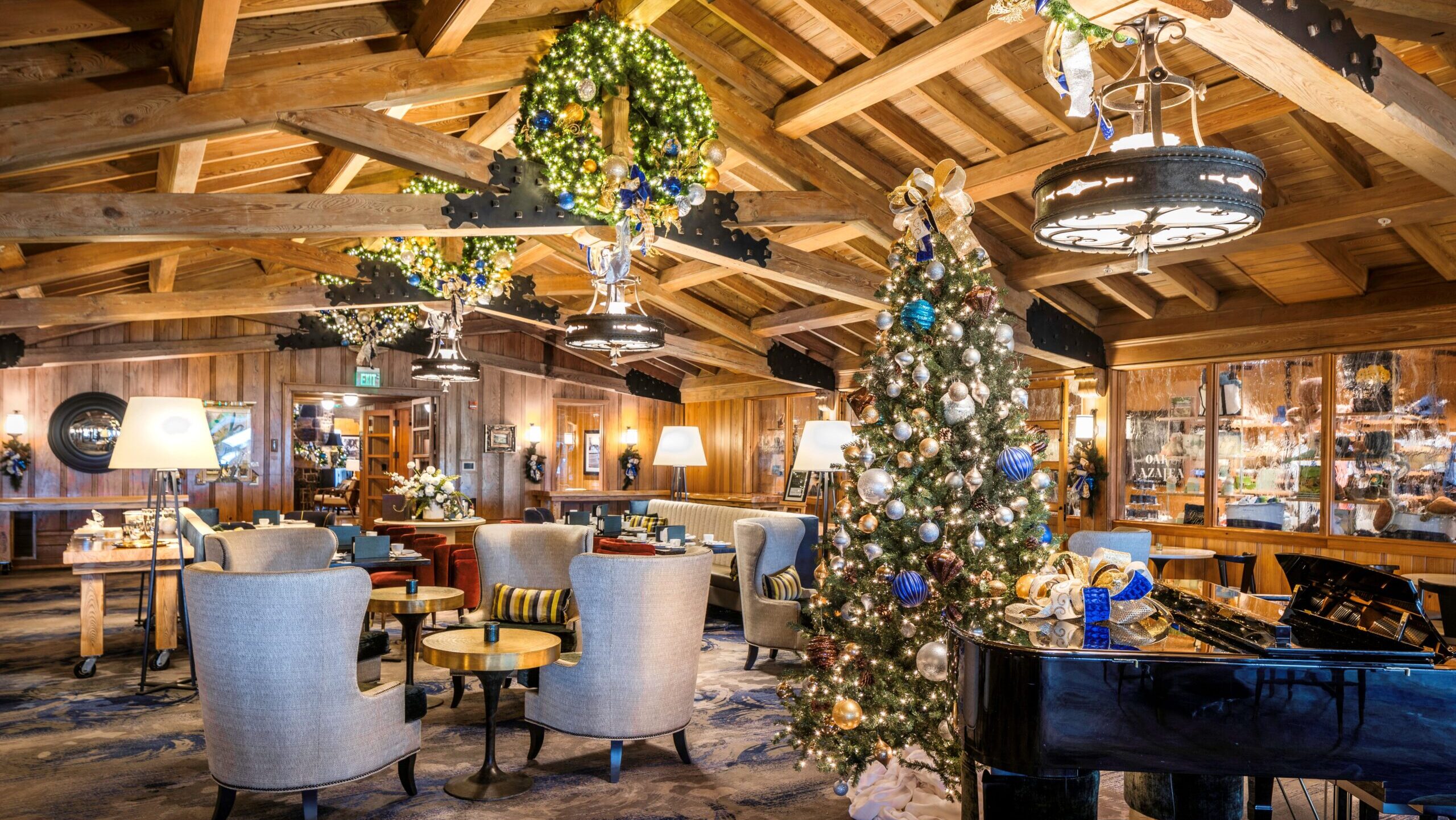As American cities go, Birmingham, Alabama, is a relative new arrival.
Founded in 1871 where two railroad lines crossed, with access to rich mineral deposits, the hamlet bloomed seemingly overnight. Steel and iron ore fueled the first population explosion, and by the early 20th century Birmingham had earned the moniker, “The Magic City.” By 1912, it boasted the “heaviest corner of the earth,” which featured four of the South’s tallest 10-story skyscrapers.
The city eventually became a mecca for college football and the arts, producing gridiron legends, Broadway talent and Hollywood stars. And as the steel industry that drove the original growth waned, a new wave of investment in medicine, technology, banking and academic research revitalized the region. And the Southeastern Conference, soon to be 16 teams strong, is based here.
But, as any parent knows, growth spurts aren’t always easy. Birmingham’s early years were filled with something more than teenaged angst. And, with the world tuned in, what happened reverberated across the globe.
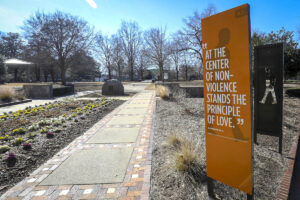
The United States Civil Rights Trail provides a guided walking tour of Birmingham’s history and includes stops in Selma, Montgomery, Tuskegee and Atlanta. (Regions Bank/Contributed)
Troubled Past, but ‘Hope for the Future’
Birmingham grew out of the industrial revolution, drawing in Blacks from rural areas and immigrants from Europe. But from the very beginning, everything was segregated by an invisible but seemingly unmovable barrier between the races.
Today, the expansive Birmingham Civil Rights Institute serves as a time capsule of a century-long struggle for equality, and the pledge that rights earned will never eroded. It captures the most heinous moments and historical perspective that led to major changes across the country.
Most of all, the interactive museum shares the story of a city’s troubled past and hopeful future.
The year 1963 remains one of the most eventful in modern history. The U.S., Britain and the Soviet Union agreed to a nuclear test-ban treaty. “Lawrence of Arabia” won the Oscar for best picture. And a young president who vowed to get America to the moon lost his life on a November day in Dallas.
By then, Birmingham had an infamous nickname, “Bombingham,” due to 50 explosions that rocked the city over the years –targeting the homes of its black citizens and those pushing for change. The level of resistance was so threatening that few believed there was a way forward. But Civil Rights leaders such as Rev. Fred Shuttlesworth were undeterred.
“I’ve been in Birmingham for 20 years. My biggest surprise moving here was how nice the people are.”
Charles Woods III, education director at BCRI
It all came to a head in ’63.
The Birmingham Campaign, a series of non-violent protests, began pushing for racial justice, first with sit-in campaigns, then, marches, leading up to the integration of the city’s schools.
Charles Woods III serves the BCRI as education director. A California native, he’s come to love his adopted home.
“I’ve been in Birmingham for 20 years,” Woods said. “My biggest surprise moving here was how nice the people are. The cost of living is very good. Here, I see the hope for the future.”
But there is no future without acknowledging the past.
“Birmingham in 1963 was the most violent and segregated city in the country,” Woods explained. “Yet leaders knew if change could be implemented here, it could be implemented anywhere.”
As protests grew, Commissioner of Public Safety Bull Connor responded with force, using police attack dogs and firehoses in an attempt to stop nearly 1,000 youth of the Children’s Crusade from marching from 16th Street Baptist Church to City Hall.
The moments were captured in still photographs and live network news broadcasts, horrifying anyone with a conscience in every corner of the world.
“People from all walks of life, came together with African-Americans and the Black church and fought for equal rights,” said Tiffani Saxton, vice president of marketing at the Institute. “What happened here set the course for the rest of the nation. As a result, a better Birmingham was created. That’s the legacy we honor here at the Birmingham Civil Rights Institute.”
Unfortunately, the violence was far from over.
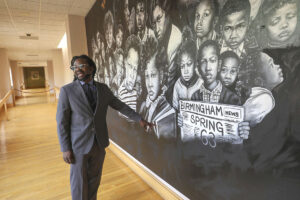
Charles Woods III shows off Ronald McDowell’s evocative mural at the Birmingham Civil Rights Institute./Gary Tramontina Photos (Regions Bank/Contributed)
Four Little Girls
Since Birmingham’s inception, 16th Street Baptist Church served as the cornerstone for the African American community. Paul Robeson and Langston Hughes performed here. And, as the Civil Rights Movement grew, the red-brick building became the epicenter, which made it a target.
In the months following Connor’s vicious attack, Alabama Gov. George Wallace attempted his stand in the schoolhouse door, a failed showdown with the federal government to keep the University of Alabama from admitting Black students. By September, Birmingham’s schools were integrated, despite Wallace’s use of the National Guard to attempt to block the move.
On a seemingly normal September Sunday morning, as congregants prepared for the weekly sermon, four little girls played in a lounge in the lowest level of the church unaware that danger lurked under the stairwell to the sanctuary, where Klansmen had placed a bomb.
At 10:22 a.m., an explosion heard miles away took the lives of Addie Mae Collins, Denise McNair, Cynthia Wesley and Carole Robertson and injured countless others. Addie Mae’s sister, Sarah, lost an eye. Inside the sanctuary, the explosion blew out the face and heart of a stained-glass portrait of Jesus but left the rest of the body intact.
“I feel like the message was clear,” said Joyce Stewart, our tour guide. “We were being told that evil could not continue.”
Once again, the violence would lead to change. The Kennedy administration had already begun drafting new legislation. By 1964, President Johnson signed the Civil Rights Act into law.
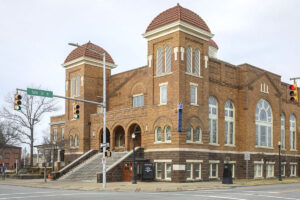
The 16th Street Baptist Church opened in 1911, becoming the spiritual hub of the African American community and the epicenter of the Civil Rights Movement./Gary Tramontina Photos (Regions Bank/Contributed)
When a Wurlitzer Saved the Day
Another pivotal year in Birmingham’s history was 1927. Legion Field made its debut, and for the next seven decades would be known as “The Football Capital of the South,” hosting some of the biggest Alabama and Auburn home games, a myriad of spring leagues, NFL exhibitions and the international soccer matches of the 1996 summer games in Atlanta.
Alabama’s Bear Bryant prowled the sidelines and became college football’s winningest coach there, while Auburn’s Pat Sullivan and Bo Jackson capped Heisman Trophy campaigns on the legendary artificial turf.
Just a few miles away, Birmingham’s theatre district had taken shape with more than a dozen venues offering everything from first-run movies to vaudeville shows to stage productions.
By 1927, the Lyric Theatre had been a fixture for 13 years, luring the likes of the Marx Brothers, Mae West, Sophie Tucker and Will Rogers to the stage. Tickets were reasonably priced, from a quarter to 75 cents, where showgoers could watch in comfort from floor seats to ornate side balconies.
What set the Lyric apart, however, was the upper balcony, which offered seating for the African American community – after climbing the equivalent of three stories – a perch above the white audience below in what is now known as the Regions Bank Auditorium.
It is believed to be the only theatre in Birmingham that allowed segregated Black and white customers to see the same show at the same time for the same price.
“That made it a very unique venue at the time,” explained the Lyric’s Jerry Doss. Listed on the National Register, the century-old Lyric looks as good today as the day it opened, thanks to a massive, long-term redevelopment project in the 2010s.
Directly across the street, the Alabama Theatre is another reclaimed treasure. It opened Dec. 26, 1927, as the largest venue of its kind in the city, with 2,500 seats – more than double the Lyric’s capacity. The façade was reminiscent of New York’s famed Paramount Theatre, and still looks fabulous.
“I’ve had so many incredible opportunities here. The best opportunity is to serve the city of Birmingham. That’s something you can’t put a price tag on.”
Jerry Doss
Like the Lyric, it remains a technicolor tribute to the past, drawing thousands to concerts, performances and classic movies today. But what sets the Alabama Theatre apart from contemporaries is the theatre organ that rises from beneath the stage at showtime. Dubbed “The Mighty Wurlitzer,” one of only three in the world still in existence, it was designed for silent films but remains a hard-working icon in the 21st century.
“This organ saved us from being turned into a parking lot,” Doss said.
The nonprofit Birmingham Landmarks began restoring the Alabama in 1987, adding the Lyric to the list decades later. Each year, the Alabama puts the spotlight on the Mighty Wurlitzer with a showing of the 1925 silent classic, “Phantom of the Opera,” starring Lon Chaney.
A former banker, Doss joined the Alabama Theatre staff working event security before taking on a full-time role.
“I’ve had so many incredible opportunities here,” Doss said. “The best opportunity is to serve the city of Birmingham. That’s something you can’t put a price tag on.”
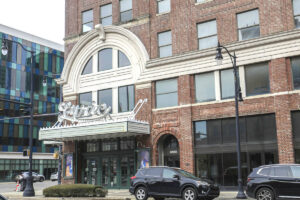
The entrance to the refurbished Lyric Theatre. Built in 1910, the golden-age venue continues to host shows on a regular basis luring visitors to downtown Birmingham. (Regions Bank/Contributed)
The Cultural Hub of the City
Few businesspeople had more of an impact on Birmingham than A.G. Gaston. He got his start selling life insurance and burial policies at steel mills and became one of the South’s first African American millionaires. Now, the entrepreneur’s greatest legacy is also being lovingly restored.
The A.G. Gaston Motel, next to the Birmingham Civil Rights Institute, opened in 1954 and became the overnight base of the Civil Rights Movement. Dr. Martin Luther King Jr. held press conferences from a balcony next to his reserved room, something not lost on Klansmen when they bombed the motel on Mother’s Day of 1963. Thankfully on the day of the blast, two years after the attack on the Freedom Riders and just months before the tragedy at 16th Street Baptist Church, King was safely at home in Atlanta.
King had already made his mark in Montgomery. By the early 1960s, he was the best-known figure in the movement. Invited by the Rev. Fred Shuttlesworth to help move Birmingham forward, King needed a home away from home.
“There was no place for people to safely gather and eat,” said historian Marie Sutton. “This became the obvious location.”
The A.G. Gaston Motel was already part of the Green Book, a travel guide of the 1950s and ‘60s that provided in detail safe travel routes and destinations for African Americans.
“By its inclusion in the Green Book, a Black person in the 1950s could be assured of first-class accommodations at a Black-owned motel,” Sutton said. “There was a sense of pride in the A.G. Gaston, and it became a hub where you had your first date, went to the prom or got married, as my parents did here in the ‘70s.”
“Now, I’m so grateful to be able to tell the story – and to show it to visitors.”
Marie Sutton, author of “The A.G. Gaston Motel: A Civil Rights Landmark”
A longtime newspaper reporter, Sutton became the authority on the history with her book, “The A.G. Gaston Motel: A Civil Rights Landmark.” Now, she’s part of a joint effort between the city, the National Parks Service and the Mellon Foundation to restore the landmark.
“Celebrities could perform for white audiences but couldn’t stay overnight in white hotels, so the list of people who stayed here is incredible,” Sutton said. “Ray Charles and James Brown, Ike and Tina Turner, Nina Simone, Nat King Cole …
Throughout the movement, white reporters from across the nation stayed at the Gaston because of the fear they, too, would be targeted by extremists.
But as years passed, the Gaston’s place in history was often forgotten, as was the building, left in a deteriorating shape until Sutton’s book spawned a restoration movement.
“To write this caused me to grieve,” Sutton said. “Because this place was languishing and there was no one to save it. Now, I’m so grateful to be able to tell the story – and to show it to visitors. To know that words helped bring this together touches my heart.”
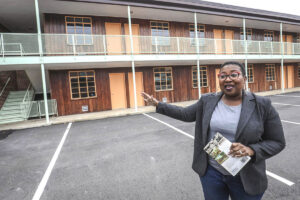
Author and historian Marie Sutton points out the balcony of the A.G. Gaston Motel, where Rev. Martin Luther King Jr. held press conferences. (Regions Bank/Contributed)
Honoring the ‘Say Hey’ Kid
Rickwood Field is a mess, and Gerald Watkins couldn’t be happier.
A former Regions banker, Watkins is the executive director of America’s oldest existing ballpark. Built in 1910, fashioned after Pittsburgh’s Forbes Field, Rickwood is undergoing a renovation of its own in time for the June 20th MLB at Rickwood Field event, a regular-season game featuring the San Francisco Giants and the St. Louis Cardinals.
Gravel covers the infield, which has been shifted closer to the grandstands as a state-of-the-art drainage system is installed. The outfield walls are missing, soon to be replaced for the big game. And as the work continues, Watkins gazes down the first-base line to a brand-new foul pole.
“Right now, I see Willie in right field dreaming about playing in the major leagues,” Watkins said. “To have this game as a tribute to the Negro Leagues is special for baseball, and especially Birmingham.”
“Satchel Paige, Josh Gibson, Willie Mays, Ty Cobb, Babe Ruth, Reggie Jackson – they all played here.”
Gerald Watkins, former Regions banker
“Willie,” if you don’t know by now, was a member of the Birmingham Black Barons. Young Willie Mays debuted for the team in 1948 as a teen, helping lead the Black Barons to the 1948 Negro World Series. Little did anyone know that when the Homestead Grays wrapped up the best-of-seven showdown, it would be the final championship series. Beginning with Jackie Robinson’s arrival in Brooklyn the year before, the best players soon left the Negro League in droves to join American and National League teams.
Mays was just getting started. Signed by the then-New York Giants, he became arguably the game’s greatest five-tool player, earning All-Star Game nods 24 times during a Hall of Fame career. Known as the “Say Hey Kid,” Mays is just one of 182 Hall of Famers who’ve experienced Rickwood Field in person.
“Satchel Paige, Josh Gibson, Willie Mays, Ty Cobb, Babe Ruth, Reggie Jackson – they all played here,” Watkins said.
History oozes from every pore of the venue. When the minor-league Birmingham Barons departed for a newer stadium in the 1980s, the nonprofit Friends of Rickwood stepped up to save the ballpark that preceded Boston’s Fenway Park, Chicago’s Wrigley Field and the sinking of the Titanic.
And come June, the world will be watching Birmingham again. This time, in celebration of the past.
This article first appeared on Doing More Today as one of Regions Bank‘s “Good Town” features.
